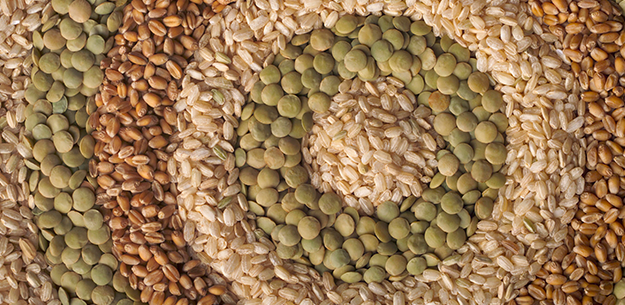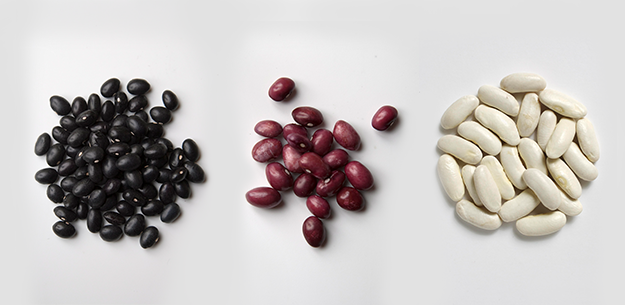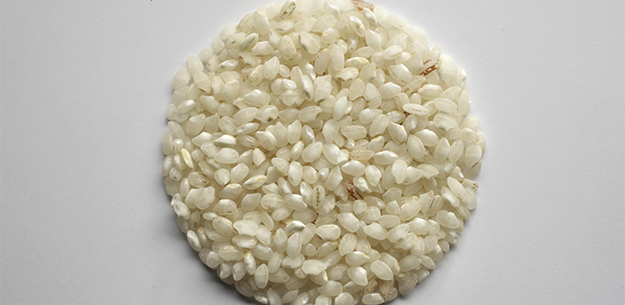.png.transform/rendition-xs/image_image%20(1).png)
Legumes & Rice
The essential role played by pulses in the diet of the different Mediterranean peoples through the ages, has left a deep mark on Spanish cuisine, where an enormous variety of soups and stews containing pulses can be found in every corner of the country. Spanish rice is so versatile it can be combined with an endless range of foods – fish, shellfish, meat, vegetables and many others – and it goes equally well with savory or sweet flavors.
LEGUMES
Legumes (pulses) are the seeds of leguminous plants which are left in their pods on the plant until they dry. They are then picked and shelled.
The cultivation and consumption of pulses in the Mediterranean can be traced back to the origins of farming. In ancient times, pulses were crushed and eaten in the form of bread, boiled with other vegetables and dressed with a little olive oil, or made into soups and purées. Because of their great nutritional value, high protein content, accessibility and shelf-life, they have generally been considered the poor man’s meat.
The essential role played by pulses in the diet of the different Mediterranean peoples through the ages, has left a deep mark on Spanish cuisine, where an enormous variety of soups and stews containing pulses can be found in every corner of the country. The most popular pulses in Spain today are chickpeas, lentils and beans.
Chickpeas
Many varieties of chickpea (garbanzos) are cultivated in Spain. One of the best is Blanco Lechoso, which is grown in Andalusia and Extremadura. The Castellano, a medium-sized, yellowish chickpea, is produced both in southern Spain and on the Castilian plains, as is the smaller Pedrosillano.
The chickpeas from Protected Geographical Indication (PGI) Garbanzo de Fuentesaúco in the province of Zamora (Castile-León), have been popular for centuries. They are buttery in texture and have a very fine skin.
Lentils
The best-known Spanish lentils are the PGI Lentejas de La Armuña from the province of Salamanca (Castile-León). The variety is called Rubia de la Armuña. These are large, flavorsome lentils with a yellowish-green color. Grown in much of Castile-León, Pardina lentils from PGI Lentejas Tierra de Campos are small and brown, with a smooth skin and firm texture.
Lentils are rich in iron and other mineral salts and are standard fare all over Spain. Since they contain no fat, they are usually cooked with ham, bacon, pork sausage or other fats to make them more appetizing and nutritious. They are also often partnered with game like partridge and quail.
Beans
Beans, which go under a variety of names in Spanish – alubias, fabas, fríjoles, habichuelas – are native to the Americas. After their introduction into Spain, cultivation spread fast, and by the middle of the 16th century, they had become perfectly acclimatized in a number of European countries.
Among the varieties grown in Spain are the famous PGI Judías de El Barco de Ávila from the provinces of Ávila and Salamanca (Castile-León). Also from Castile-León are the PGI Alubia de La Bañeza beans, which represent various local varieties.
Further north, in the Principality of Asturias, we find the much-praised PGI Faba Asturiana beans. These are large, kidney-shaped beans with a creamy-white color. Since the 19th century, they have been one of the region’s main crops and are the essential ingredient in the most representative of Asturian dishes, fabada. The term faba is also used in the neighboring region of Galicia, where the most famous are the PGI Faba de Lourenzá beans from the Mariña district in the province of Lugo. The local varieties – faba Galaica, faba do Marisco and faba Verdina – are tender and firm and have very thin skin.
Other well-known Spanish varieties are the dark red Alubias de Tolosa beans in Basque Country, the red caparrón beans from La Rioja and Burgos, and the large judión from La Granja in Segovia. Beans are tremendously versatile and have given rise to a multitude of recipes using pork, game, vegetables, and even fish and shellfish.
RICE
Paella is not only a Spanish gastronomic icon, but also probably one of this country's most widely-imitated dishes. But rice is cooked in a multitude of ways in Spain, not only in the traditional shallow paella pan that gives that dish its name. Classic rice dishes are also made in the typical pucheros (stewpots) and cazuelas (earthenware casseroles). Whereas Paella is usually cooked directly over the heat, rice dishes in a casserole are often finished in the oven.
Rice is so versatile it can be combined with an endless range of foods – fish, shellfish, meat, vegetables and many others – and it goes equally well with savory or sweet flavors. In fact, one of the most traditional dishes in Asturias is arroz con leche (rice pudding).
Rice dishes are usually named after their most significant ingredient, i.e. shellfish paella, or rabbit paella. Or they may be named after their color, such as black rice made with squid ink, or golden rice – named for the color of the crust after baking. Valencia, the first region in Spain to cultivate rice, was the birthplace of rice cuisine and continues to exemplify rice in gastronomy. The best-known paella recipe is for paella Valenciana, which typically combines rabbit and chicken with vegetables that include native green bean varieties garrofón, ferraúra and tavella.
Growing areas
Rice was first cultivated in Europe by the Arabs, who planted it in the wetlands along the eastern Spanish coast in the 8th century. Considered a rare, difficult crop, it was consumed only by the wealthier classes.
The development of rice cuisine took off centuries later when large-scale cultivation began. During the 19th century, traditional growing areas expanded while others, like what is now PDO Arroz del Delta de Ebro in Tarragona (Catalonia), were created.
The first Protected Denomination of Origin for rice in Europe was PDO Calasparra, which is grown in a mountainous area along the river Segura in Murcia. The varieties here are Bomba and Balilla X Solana, both of which are sold as either brown or white rice. Bomba rice is the best-known of the Spanish varieties.Its grains are rounded but they increase lengthwise by almost fifty percent when cooked and are very absorbent.
For its part, PDO Arroz de Valencia refers to the rice grown traditionally in the Júcar river basin and in the natural Albufera wetlands in Valencia, where the varieties are Senia, Bahía and Bomba.
Since the mid-20th century, new rice-growing areas in Andalusia and Extremadura have centered mainly on imported long-grain varieties, primarily for export.
The essential role played by legumes and rice in the diet of the different Mediterranean peoples through the ages, has left a deep mark on Spanish cuisine, where an enormous variety of recipes containing pulses and rice can be found in every corner of the country.
Santiago Botas/@ICEX. Edited by Adrienne Smith/@ICEX



- /content/dam/en/icex-foodswines/images/products/legumes-rice/Legumes%20Rice%20carr1.png
- /content/dam/en/icex-foodswines/images/products/legumes-rice/Legumes%20Rice%20carr2.png
- /content/dam/en/icex-foodswines/images/products/legumes-rice/Legumes%20Rice%20carr3.png

